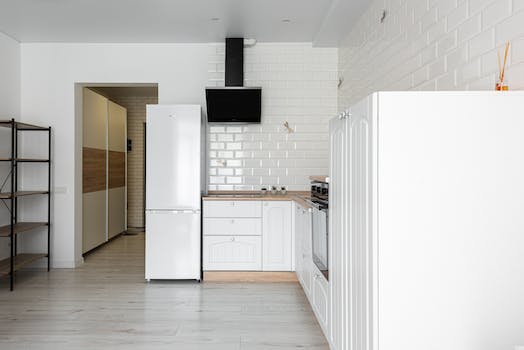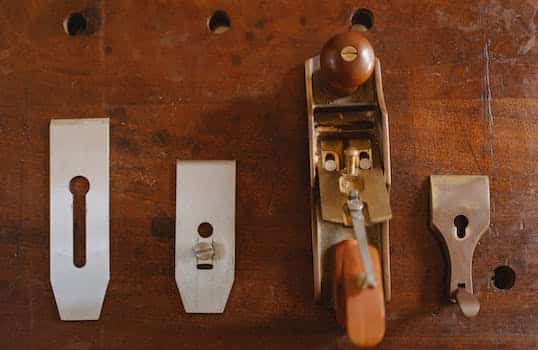If you’re struggling with limited space in your home, built-in shelves can be a game-changer. Not only do they provide much-needed storage, but they also maximize the available space and create a sleek, customized look. In this article, we’ll explore the benefits of built-in shelves for small areas and how they can transform your living space.
- 1. Introduction
- 1.1. Benefits of built-in shelves for small spaces
- 1.2. Factors to consider before installing built-in shelves
- 1.3. Materials needed for building built-in shelves
- 1.4. Tools required for building built-in shelves
- 1.5. Costs of building built-in shelves
- 2. Designing Built-In Shelves for Small Spaces
- 2.1. Determining the available space
- 2.2. Choosing the right design for the space
- 2.3. Maximizing storage space with built-in shelves
- 2.4. Incorporating built-in shelves into the overall design of the room
- 2.5. Selecting the appropriate materials for the shelves
- 3. Building Built-In Shelves for Small Spaces
1. Introduction
Small spaces can be challenging to decorate and organize, but with the right furniture and storage solutions, you can make the most of your limited square footage. One of the most effective ways to maximize space in a small area is by incorporating built-in shelves. Built-in shelves not only provide extra storage, but they also add a decorative element to your space. In this article, we will explore the benefits of built-in shelves and how they can transform your small area into a functional and stylish living space.
1.1. Benefits of built-in shelves for small spaces
Built-in shelves are becoming increasingly popular in small spaces due to the numerous benefits they offer. Here are some of the benefits of incorporating built-in shelves into small areas:
1. Maximizing Space: Built-in shelves can provide storage and display areas without taking up valuable floor space. This is particularly important in small areas where every inch counts.
2. Customization: Built-in shelves can be designed to fit any space and can be customized to fit the style and needs of the homeowner. This allows for a personalized touch and can enhance the overall look and feel of the room.
3. Organization: Built-in shelves can help keep a small space organized and clutter-free. They can be used to store books, decorative items, and other belongings, making it easier to find what you need.
4. Increased Home Value: Built-in shelves are a desirable feature for many homebuyers, which can increase the value of your home. This is particularly important if you plan to sell your home in the future.
Overall, built-in shelves are a smart investment for small spaces. They can provide a multitude of benefits while also adding value to your home.
1.2. Factors to consider before installing built-in shelves
When space is limited, every inch counts. This is where built-in shelves come in handy. Not only do they provide extra storage, but they also maximize the use of available space. However, before you start installing built-in shelves, there are a few factors to consider. This article will explore those factors to help you make an informed decision and get the most out of your small area.
1.3. Materials needed for building built-in shelves
Maximizing Space: The Benefits of Built-In Shelves for Small Areas
In small spaces, every inch counts. That’s why built-in shelves are a great solution for maximizing space while also adding functionality and style to a room. Whether you’re looking to create a home office, a cozy reading nook, or simply need more storage space, built-in shelves offer a versatile and customizable solution. But before you get started, it’s important to have the right materials on hand. Here’s a list of what you’ll need to build your own built-in shelves.
1.4. Tools required for building built-in shelves
To build your own built-in shelves, you’ll need a few tools to get started. These include a measuring tape, level, saw, drill, screws, nails, and wood glue. It’s also a good idea to have a stud finder handy in case you need to anchor the shelves to the wall. With these tools on hand, you’ll be ready to maximize the space in your small area with custom-built shelves.
1.5. Costs of building built-in shelves
When it comes to building built-in shelves, one of the first things to consider is the cost. The cost will depend on a variety of factors, such as the materials used, the size of the shelves, and whether you hire a professional or do it yourself. If you opt to hire a professional, the cost could range from a few hundred to several thousand dollars. However, if you choose to do it yourself, you could save a significant amount of money on labor costs. Keep in mind that the cost of materials can also vary, depending on the type of wood or other materials you choose. Overall, building built-in shelves can be a great investment for maximizing space in small areas, but it’s important to consider the costs before getting started.
2. Designing Built-In Shelves for Small Spaces
When it comes to designing built-in shelves for small spaces, it’s important to consider the dimensions of the area and the items that will be stored on the shelves. One approach is to use vertical space by extending the shelves all the way up to the ceiling. This not only maximizes storage space, but also creates a visually appealing display. Another option is to use narrow shelves that are deep enough to hold items such as books, but don’t take up too much floor space. Additionally, incorporating adjustable shelves can provide flexibility in storing items of different sizes. By carefully considering the dimensions and needs of the space, designing built-in shelves can be an effective way to maximize storage while maintaining a stylish and functional look.
2.1. Determining the available space
Before designing and installing built-in shelves in small spaces, it is important to determine the available space. This can be done by measuring the height, width, and depth of the area where the shelves will be installed. It is also important to consider any obstacles, such as electrical outlets or vents, that may affect the design and placement of the shelves.
Once the available space has been determined, it is important to consider the purpose of the shelves. Will they be used for storage or display? This will affect the design and layout of the shelves. For example, if the shelves will be used for storage, it may be necessary to include drawers or cabinets for items that need to be hidden away.
Overall, determining the available space and purpose of the shelves is essential for designing built-in shelves that maximize space and functionality in small areas.
2.2. Choosing the right design for the space
When it comes to designing built-in shelves for small spaces, choosing the right design is crucial. The design should not only be aesthetically pleasing but also functional and practical. One of the first things to consider is the purpose of the shelves. Are they for storage or display? Will they hold books, decorative items, or a combination of both? Once the purpose is established, the next step is to determine the style and material. The style should complement the overall design of the room while the material should be durable and long-lasting. Finally, the size and placement of the shelves should be carefully considered to maximize the space and ensure easy accessibility.
2.3. Maximizing storage space with built-in shelves
When it comes to maximizing storage space in small areas, built-in shelves can be a game-changer. However, designing these shelves to fit seamlessly into your space requires careful consideration. Here are some tips for designing built-in shelves for small spaces:
1. Take accurate measurements: Before you start designing your shelves, it’s important to take accurate measurements of the space where they will be installed. This will ensure that your shelves fit perfectly and maximize the available space.
2. Consider the purpose of the shelves: Are you designing shelves for books, decorative items, or everyday storage? Understanding the purpose of your shelves will help you determine the size and spacing of each shelf.
3. Choose the right materials: When designing built-in shelves, it’s important to choose materials that are sturdy and can support the weight of your items. Consider using wood or metal for added durability.
4. Create a cohesive design: Built-in shelves should blend seamlessly into your space. Consider matching the color and style of your shelves to the existing decor in your room.
By following these tips, you can maximize the storage space in your small area and create a functional and stylish design.
2.4. Incorporating built-in shelves into the overall design of the room
When designing a room with built-in shelves, it’s important to consider how they fit into the overall design. You want the shelves to be functional and practical, but also aesthetically pleasing. One way to incorporate built-in shelves is to choose materials and finishes that complement the rest of the room. For example, if you have a modern living room with clean lines and neutral colors, consider built-in shelves with a sleek, minimalist design. Another way to incorporate built-in shelves is to use them as a focal point in the room. Choose a unique shape or style that draws the eye, and use the shelves to display decorative items or personal collections. No matter how you choose to incorporate built-in shelves into your room, remember to keep function and form in mind to create a space that is both beautiful and practical.
2.5. Selecting the appropriate materials for the shelves
When designing built-in shelves for small spaces, it is important to select the appropriate materials to ensure durability and functionality. The type of material you choose will depend on the weight of the items you plan to store on the shelves, as well as the overall design and style of the space. For example, if you are looking for a more modern and minimalist look, you may want to consider using materials like glass or metal. However, if you prefer a more traditional and rustic feel, wood may be a better option. Other factors to consider when selecting materials include cost, ease of installation, and maintenance requirements.
3. Building Built-In Shelves for Small Spaces
When it comes to maximizing space in small areas, built-in shelves are a great solution. Not only do they provide storage space, but they also add a stylish touch to any room. Building built-in shelves may seem like a daunting task, but with the right tools and some basic carpentry skills, it can be easily accomplished. The first step is to determine the size and location of the shelves. It’s important to consider the overall design of the room and how the shelves will fit into the space. Once the location and size have been determined, the next step is to gather materials and tools. Plywood, screws, a saw, and a level are all necessary items. It’s also important to measure twice and cut once to ensure that the shelves fit perfectly. Once the shelves are built, they can be painted or stained to match the room’s decor. Built-in shelves are a great way to maximize space in small areas while adding a touch of style and sophistication.
3.1. Measuring the space and materials
Before starting any project, it is important to measure the space and gather all necessary materials. In the case of building built-in shelves for small spaces, accurate measurements are crucial to ensure that the shelves fit perfectly and maximize the available space. Start by measuring the height, width, and depth of the area where the shelves will be installed. Then, consider the materials needed for the project. Depending on the design and style of the shelves, materials may include wood, screws, nails, brackets, and paint. It is important to choose materials that are durable and can withstand the weight of the items that will be stored on the shelves. With careful planning and preparation, building built-in shelves for small spaces can be a rewarding and space-saving project.
3.2. Cutting the shelves and supports to size
Before building your own built-in shelves, it’s important to cut the shelves and supports to the right size. This will ensure that your shelves fit snugly into the space you have designated for them. To do this, you will need a measuring tape, a circular saw, and a level. Start by measuring the length and width of the space where you want to install the shelves. Then, use the circular saw to cut the shelves and supports to the correct size. Make sure to double check your measurements and use the level to ensure that everything is straight and level. Once you have your shelves and supports cut to size, you can begin the process of installing them into your space.
3.3. Attaching the supports to the wall
After measuring and marking where the built-in shelves will go, the next step is to attach the supports to the wall. Use a stud finder to locate the studs in the wall and mark them with a pencil. Then, use a level to ensure that the supports are straight and even. Pre-drill holes into the supports and then screw them into the studs. Make sure to use long enough screws to securely attach the supports to the wall.
3.4. Securing the shelves to the supports
Once you have built your custom shelves to fit your small space, it is important to securely attach them to the supports. Depending on the type of supports you are using, there are different methods for securing the shelves. If you are using brackets, make sure to use screws that are long enough to go through both the bracket and the shelf. For floating shelves, it is important to use a strong adhesive, such as construction adhesive or epoxy, to attach the shelf to the wall. It is also recommended to use L-brackets or other support brackets underneath the shelf for added stability. Regularly check the shelves and supports to ensure they remain secure and in good condition.
3.5. Finishing the shelves
After building your built-in shelves for small spaces, it is important to finish them properly to ensure they last and look great. Start by sanding any rough edges or spots on the shelves to achieve a smooth finish. Next, apply a coat of primer to the shelves to help the paint adhere better. Once the primer is dry, apply two coats of paint in the color of your choice, allowing each coat to dry completely before applying the next. If you want to add a unique touch to your shelves, consider adding decorative trim or molding around the edges. Finally, seal the shelves with a clear coat to protect them from scratches and wear and tear.
Conclusion
In conclusion, built-in shelves are a practical solution for small spaces, maximizing storage and organization while adding aesthetic value to the room.






These 10 innovative and imaginative DIY home decor ideas from [object Object] provide a refreshing approach to enhancing ones living…